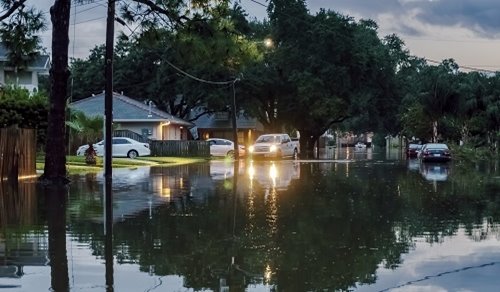Hurricanes, like Harvey, Irma, Florence and Michael can be catastrophic weather events. When the floodwaters go down and residents return to their communities, what they find may be overwhelming. Entire towns can be wiped out, and the landscape can be changed forever.
In a battle against floodwaters, it is important to have the right equipment. Storm water often contains solids and large amounts of fibrous material like branches, leaves, weeds, trash, dirt and sediments. Floodwaters also carry the risk of infectious disease and general health hazards.
 Portable pumping equipment that operates independently of the electrical power grid to remove floodwaters from critical infrastructure areas or to keep sewage collection systems operation is key to remediation efforts. Trash pumps are designed to face tough requirements, since they are capable of passing water that other pumps just can’t handle. With the durable and rugged pump designs like Generac Mobile’s, these trash pumps can easily handle solids up to 3 in. (76.2mm) in diameter.
Portable pumping equipment that operates independently of the electrical power grid to remove floodwaters from critical infrastructure areas or to keep sewage collection systems operation is key to remediation efforts. Trash pumps are designed to face tough requirements, since they are capable of passing water that other pumps just can’t handle. With the durable and rugged pump designs like Generac Mobile’s, these trash pumps can easily handle solids up to 3 in. (76.2mm) in diameter.
When clearing out an office building, once the standing water has been drained or removed, dampness may persist. Along with that moisture, mold and mildew can become a serious problem. Carpets, pad and furniture that were submerged should be removed and drywall that was soaked should be cut out and discarded.
If not dried out quickly enough and mold begins to grow, you should physically remove the mold by scrubbing it off. A strong detergent and bleach may also be required. The longer you wait to start cleanup, the more the building will deteriorate and become even more of a health threat.
It is important to contact your insurance agency before you remove anything from the building. Then work can begin. It is pretty common for people not to have flood insurance, and traditional policies don’t cover flooding. If you’re uninsured, find out what types of public assistance are available in your area.